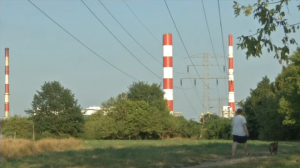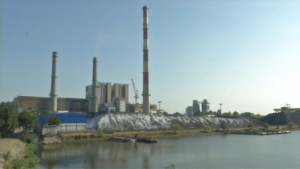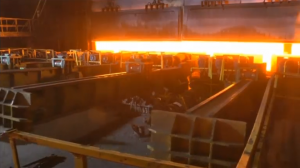 AUGUST 14 (Reuters) — A heatwave has forced Poland to sharply cut electricity supply to industry for the first time in over a decade, pushing some companies to limit production.
AUGUST 14 (Reuters) — A heatwave has forced Poland to sharply cut electricity supply to industry for the first time in over a decade, pushing some companies to limit production.
Prime Minister Ewa Kopacz called the situation “very serious” as weather forecasts for the coming days showed high temperatures will persist.
“Partial restrictions will affect over 1,600 companies, but they should not have a negative impact on their production capacities,” Kopacz said at a news conference on Monday (August 10).
She added that currently she saw no risk of limiting energy consumption for households. 
The local unit of the world’s largest steel maker ArcelorMittal halted some of its operations, saying the situation is ‘very difficult’. Due to limitations of energy supply they have shut down some production lines. Currently, they have stopped rolling in Dabrowa Mining and Sosnowiec, with work also slowed down in mills in Krakow, ArcelorMittal said in a statement to Reuters on Tuesday (August 11).
Europe’s second largest copper miner, Poland’s KGHM, warned it also might have to curb output. Poland’s largest chemical group Azoty said the limits to power use may force one of its units, Grupa Azoty Kedzierzyn, to cut production by about 10 percent, but this should not put annual production targets at risk.
The heatwave and lack of rain cut the amount of water needed to cool coal-fired power plants, from which Poland generates about 90 percent of its electricity. The country has virtually no solar energy generating capacity.
Temperatures in Poland topped 30 degrees Celsius last week and may reach 39 degrees this week, according to Poland’s meteorology institute.
 Head of the national grid operator Polskie Sieci Elektroenergetyczne (PSE), Henryk Majszczak, said on Tuesday that outdated technology as well as high temperatures was contributing to the problem.
Head of the national grid operator Polskie Sieci Elektroenergetyczne (PSE), Henryk Majszczak, said on Tuesday that outdated technology as well as high temperatures was contributing to the problem.
“”First of all, malfunctions of the generating units, which become more common at very high temperatures. Given the structure of our manufacturing park where there are plenty of old units that have exceeded the reasonable period of technical effectiveness, this phenomenon is increasing. The second reason (for imposing power consumption limits) are hydrological limitations associated with low levels of water in rivers, which are fundamental for the open cooling systems of these blocks,” Majszczak said.
PSE said it had expected consumption in the coming days at 22,000-22,200 MW, one of the highest ever recorded in the summer peak.
At the same time potential power generation stood at about 25,100 with actual production shortages at over 4,000 MW.
The operator said it limited the export of electricity and had been buying power from neighboring grids.







